I recently went from a 4 years old 18" Dell Alienware gaming laptop to a brand new 17" ASUS Republic of Gamers, and while the price tag was nothing comparable, it is entirely justified by a lot of design details outside the choice of computing components.
But let's take a step back in time to figure out why I initially bought an Alienware in the first place.
Disclaimer: Both computers mentioned in this article have been personally purchased by me and I didn't receive any compensation from Dell or ASUSTeK to write this article.
The Alienware purchase reasons
Fall of 2011, my wife and I were living in France waiting for her US work visa answer. We submitted the full request a few months before, and it was really affecting our day-to-day behavior. Not able to plan for the near future, we were in a kind of stasis. We weren't buying anything for our apartment in case we would have to leave it, we weren't traveling for fear that we would miss the United States Citizenship and Immigration Services response, and then my desktop tower broke down. I needed a computer able to run video games but I couldn't resolve to buy a new tower since I wouldn't bring it with me in the event of a potentially imminent oversea move.
That's when I turned to Alienware. Being more frugal than usual with our money, we had the financial capacity of buying a high-end gaming laptop, and Alienware was the only brand I knew making gaming laptops back then. Being accustomed to a 19" 4:3 monitor, I decided for the largest screen size available, 18". The rest of the config was pretty straightforward except that I took only one GPU out of the two slots available because I thought it was kind of overkill, still costing around €2,000 ($2,800 at the time). At 5kg ( 10 lbs ) and 5cm ( 2" ) thick, it was massive and didn't fit in any laptop bags. I had to buy a trekking bag with extra shoulder straps padding to carry it comfortably.
It turns out it was the right time to buy a gaming laptop because we moved to New York a few months after in early 2012. The Alienware did a few more transatlantic flights during the three and half next years totaling a impressive number of overweight frequent flyer miles. At first it rendered any 3D game I threw his way flawlessly, but after a while it started to act weird. Games would start out smooth, and then the frame rate would suddenly drop to unplayable. Lowering the graphics settings would bring the smooth back, but it didn't make any sense for me since the game started out fine with high graphics settings. It turns out the GPU was overheating and a circuit breaker would slash the performances to avoid melting microprocessors. Cleaning the dust would improve things a little, but soon enough the heat safety would kick back in. I resorted to play games like Borderlands and Dota 2 at the lowest graphics settings, even reducing the resolution in the process.
That's why It didn't bother me too much when the motherboard broke in November 2015. A quick look at the aftermarket for part dissuaded me to try a manual repair, a genuine Alienware motherboard costing more than $200, without the guarantee of the machine working for much longer after a difficult manual replacement. And lasting 4 years for any computer is a feat in itself, lowering the computer cost per year to a meager €500 for impressive performances even if degrading over time. I then went on the quest for my next gaming computer.
Enter the newest ASUS ROG gaming laptop
This time, I tried to be more thorough during my search. I looked at reviews, comparisons, tops, I considered Origin PC, Aorus, Alienware again before setting my sight on ASUS. Inheriting from the already tested G751 series, the G752 models were given a new cooling system named "vapor chamber". Instead of traditional solid heat pipes, the "vapor chamber" is comprised of hollow heat pipes filled with a liquid that helps spreading heat more evenly throughout the system. On top of that, the two laptop fans design is meant to get rid of dust before it reaches the radiator, an argument that resonated with me after the heat related shortcomings of my Alienware machine.
At this point I must point out that I probably didn't do things right with my initial Alienware purchase. Like I said before, I choose to have only one graphic card out of the two available slots. It turns out that this choice entirely removes one fan out of the three available slots (one for the CPU, and one for each GPU). I now suspect that having only one GPU made it work hotter, while having only two fans out of three made dissipating the extra heat harder. This may explain the high temperatures measured even on moderate graphic load. But at this time I wasn't fully ready to go throw $2,500 the Alienware way again.
Since the G752 series was brand new in Fall 2015, most models weren't available at the time of my purchase. I set my sight on the most expensive model available, the $1,800 ASUS G752VT-DH72. Just below the massive G752VY, unavailable at the time, it still features high end components. But since comparing performances between two laptops 4 years apart doesn't make any sense, I won't go further into technical specifications. Instead, I'll talk about everything else.
The construction
Opening the ASUS box, I immediately got the sense that owning this laptop would be different than the previous one. The first detail that struck me was its density, or rather the lack thereof compared to the Alienware. The 17" screen ASUS laptop has smaller dimensions, and an even smaller weight, which made not take it that seriously when I first hold it, comparing it to a kid's computer. The second one, probably related, was its slight bendiness.
Being used to the Alienware for gaming and MacBook Pro for work, I took for granted that laptops were solid dense chunks of metal. This reassuring sturdiness was somehow an exterior indicator of the performance of the computer itself. This also meant that the surface I was placing my laptop on had to be perfectly level, or I would immediately know as the laptop would be rickety. In the case of the ASUS though, the laptop would bend into shape with a slight elasticity. It does not prevent normal computer usage but I wonder how the laptop would fare if I were to travel with it in a backpack. Even though I don't have any supporting evidence, I'm afraid it would be less resistant to shocks that inevitably happen in those conditions.
The sides layout
Again, it was not until I saw the poor end result of the side port/drive arrangement of the ASUS that I realized that it was important. On the Alienware, the optical drive was on the right side towards the front, along with a few USB ports towards the rear. On the left side were the rest of the ports : LAN, HDMI, 2 USB, and three jacks for audio taking all the available space. This allowed me to have an external mouse at the right side without being encumbered by cables. On the ASUS, it is the exact mirror. Unfortunately my headphones don't have an angled jack connector, so I often bump into the headphones cable with my mouse. Not that big of deal, I am a kind of border case since my desk is very narrow and the smaller dimensions of the ASUS gives more mouse wiggle room, but so far it has been a mild annoyance in games where reaction and precision are paramount (looking at you, Dota 2). And while I think I'll eventually get used to it, I can't help but think that right-hand external mouse practicality wasn't a factor in the ASUS side layout design.
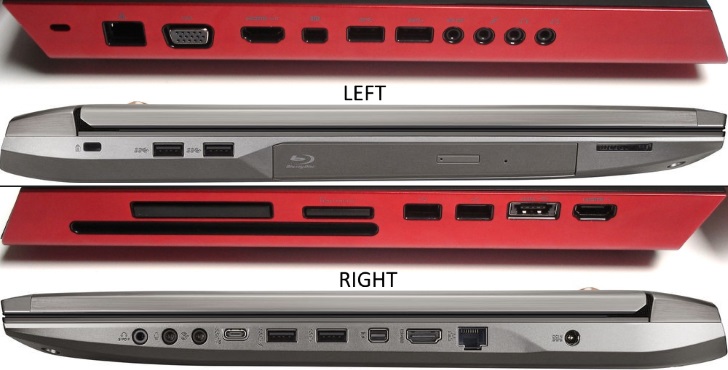
The keyboard
The Alienware featured a backlit keyboard whose color could be changed and animated at will between the 4 different panels. After playing a bit with what I thought was a cool gimmick when I first got it, I settled for a discrete and soothing dark blue back light from which I wouldn't depart from then on. When I got the ASUS, it also had a backlit keyboard, but the color was a fixed red way more aggressive, and aside from a brightness control, there is nothing more I can do about it.
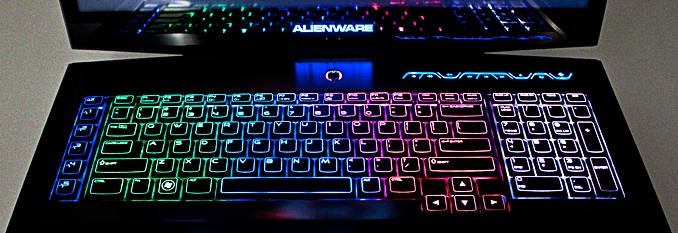
Still into details, individual keys on the ASUS keyboard are simple cuboids with the vertical edges slightly rounded. I didn' t know it could be a liability until I tried to play Dota 2 on my new machine. It run smoothly on the highest graphics settings, but as soon as things got heated, I found myself unable to reach some keys in the same timely fashion than I was able to pull off on the Alienware. All this because my finger would bump into the sharp vertical bottom edge of the key I was trying to reach from a lower pressed key. On the contrary, the Alienware keys are sloping on all vertical faces but the bottom one whose slope is nearly flat, preventing any bumping. Again, this is a practice issue, and I eventually will be proficient with this keyboard than with the previous one, but maybe not as quickly.

Last difference, and this is the biggest, the number meta keys. The Alienware features a full-featured media keys bar, with volume control and media player buttons, that is completely absent from the ASUS. Volume control is accessible through sub F keys, but no media player functions are available directly from the keyboard. This probably is the biggest shortcoming of the ASUS so far for me. Having to manually tab to Spotify to advance a track from a full screen app is not something I look forward to.
The sound
Speaking of sound, I had always been amused by the "Powered by Klipsch" logo on the Alienware. I mostly knew the brand for its in-ear headphones and given the little room available, speaker sound on a laptop can't be that good, right? Still, I could listen to game sounds and music without feeling the urge to put my headphones on. On the contrary, I had read about the poor speaker sound of the ASUS, but a review went on saying that it is not a big deal as soon as you plug you favorite pair of headphones on. It turned out not to be true for me.
When I first tried to listen to music on speaker, the resulting sound was horribly balanced, weak in all but treble, with a weird reverb going on. Following the review's advice, I plugged in my headphones but it was still terrible, especially the reverb that made the sound coming from afar in an empty warehouse. I found out that it is the initial preset in the preinstalled audio controller. Turning the preset off left the sound dull and bland in the headphones, and I had to fiddle with the manual equalizer to get something remotely audible.
The screen size
This one is in no part a fault from ASUS, rather a genius move by Alienware to still offer 18" screens on a laptop. Like I said, it doesn't fit into any laptop bag, but I discovered that once you go 18", it is hard to go back to 17". I tried Borderlands on the ASUS, and while I was able to max its graphic settings, I felt that I lacked some vertical field of view. This is not truly the case, of course, because the resolution (1920x1080) is the same on both monitors, but that's how it felt to me. I know it's unfair to compare two different screen sizes, but the thing is ASUS doesn't offer an 18" screen gaming laptop at all, making Alienware win this round just by default.
Conclusion
My initial Alienware purchase was largely uninformed. I knew the brand, I had the money to boot, it was an opportunity purchase more than a thoughtful one. And while the ASUS I bought after careful pondering is not so bad by itself after a few days of usage except for the sound and the lack of media keys, the difference with the Alienware makes it pale in comparison. If one can afford it, every single penny of the price difference between those two gaming laptop is worth it, and I will probably return to Alienware for my next gaming laptop, this time doing it right, i.e. by throwing as much money as I can to enjoy it as long as possible.
(Images shamelessly taken from notebookcheck.com, laptopmag.com, dell.com, asus.com, hardwarezone.com, excaliberpc.com, pipertech.ca)

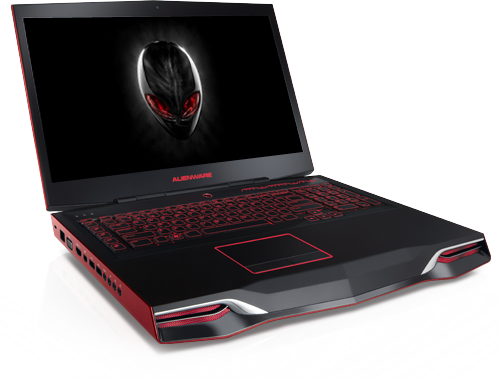
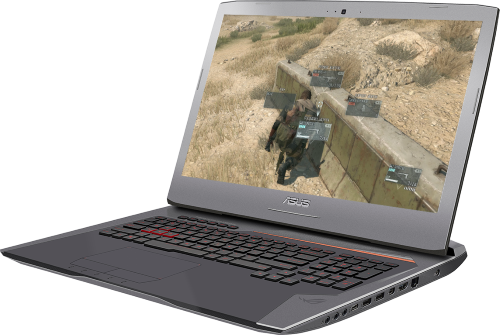
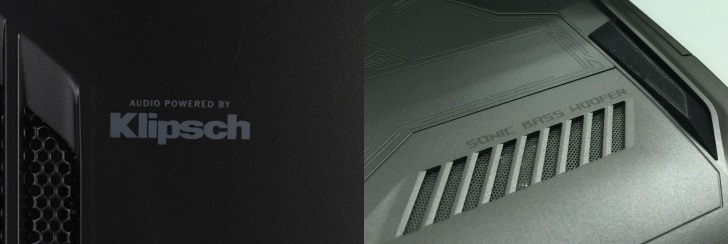





The best of the best is Siemens laptop :
Spoiler (Sélectionnez le texte dans le cadre pointillé pour le faire apparaître)
Ha ha ha, but can it run Crysis?
That's not what i call a laptop.
When qualifying a monster portable computer, i prefer to say mobile desktop.
According to me :
I fully agree with your naming convention, unfortunately for you this is not what the industry uses at the moment. Worse, the box of my laptop reads "Gaming Notebook". And yet I thought notebooks were small laptops like those you categorize "ultra-mobility"!